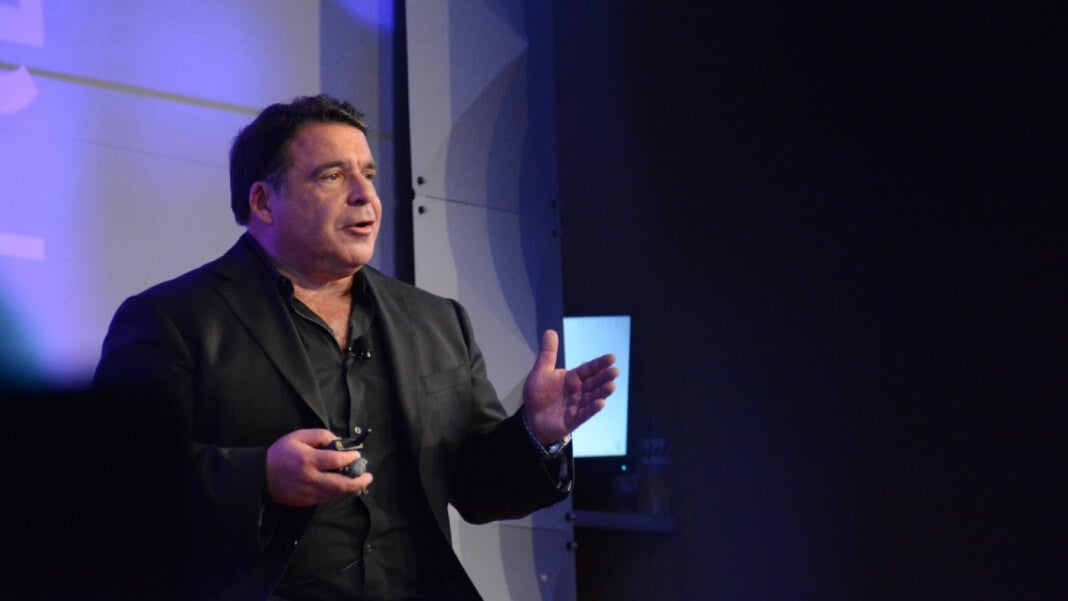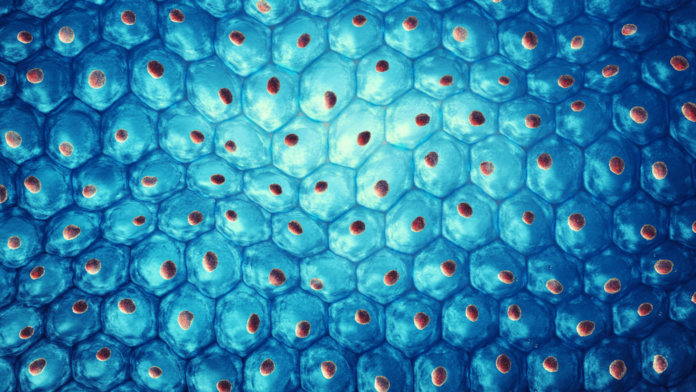To Bob Hariri, the body is a machine. Hariri is a surgeon, entrepreneur, and biomedical scientist. But perhaps it’s his time flying jets that most strongly lends itself to such thinking.
“I’ve been flying longer than anything I’ve done in my life,” Hariri said in an interview with Peter Diamandis this week at Singularity University’s Exponential Medicine in San Diego.
“You know why aviation is so incredibly safe? Because the machine, the airplane—and a human being is a machine–that airplane undergoes a continuous process of renovation and repair.”
Pilots take care of their planes by replacing parts before they wear out, Hariri said. Medicine, on the other hand, is reactive. Nothing gets replaced until it’s already broken. Hariri got into regenerative medicine and founded Celgene Cellular Therapeutics to help remedy this situation.
Regenerative medicine targets the body’s most basic parts: its trillions of specialized cells. Though medicine is reactive, the body itself is a bit like a jet, one that makes new parts to replace old ones on the fly. The vast majority of cells in the body are no more than two years old, Hariri said. (Although, the time it takes new cells to replace old cells varies by type.)
Our regenerative capability is greatest before we’re born. In an onstage interview, Hariri explained he first glimpsed this as a young surgeon. It’s long been possible to identify certain defects in a developing fetus and surgically repair them. The surgery itself requires serious incisions, but after further development in the womb, the baby is born with no scar.
“Is this a way to unlock a human being’s inner salamander?” he wondered.
The human body’s natural regenerative powers derive from its reservoir of stem cells. These cells can differentiate into any other cell type in the body, and they can also divide and replicate themselves to keep the reservoir stocked. Throughout life, the body taps into its stock of stem cells to repair, replace, and renovate—basically, to keep the system fit for flight.
Over the years, however, the regenerative reservoir is depleted. The big question: Can we therapeutically administer stem cells to supplement the body’s natural regenerative tendencies? “The old excitement and optimism around ‘can a stem cell a day keep the doctor away’ is something that drove me into the field,” Hariri said.
So, how near are we to more proactively maintaining our bodies like one of his jets?
There’s explanatory power in analogy, but pose it to scientists specializing in nearly any field, and you’ll get a “Yes, but…” In biology and medicine, the story is especially complex. As a scientist in a still-developing field, this is something Hariri likely sympathizes with.
Stem cell medicine has been evangelized for a long time. We tend to see the endgame of a new discovery at the beginning. This is a useful catalyst for more research, but it takes years of further problem-solving between catalyst and common clinical use.
“I call this the fog of cellular medicine,” Hariri said. “There was an absence of a deep understanding of the underlying biology of stem cells. More importantly, there was absence of understanding what cell was actually going to be the one we derive into a product.”
Going from discovery to product in medicine faces a number of hurdles. Questions of source quality, scalability, cost, and regulatory standards are challenges still being solved. Stem cell therapies have also had their fair share of criticism, depending on the source of the cells. Embryonic stem cells, for instance, kicked up dust earlier this century.
But after 20 years, Hariri said, the field has come a long way.
Today, there are a number of stem cell sources including somatic stem cells found in tissues throughout the body. Scientists have even learned to make stem cells by genetically reprogramming differentiated adult cells, such as skin or blood cells.
Hariri’s favored source lines up with that initial inspiration, the regenerative potential present in the womb. Placental stem cells, Hariri said, are great because they’re of the highest quality. Over the years stem cells in the body accumulate defects, but placental stem cells are yet incorrupt, a fresh set of instructions to reboot the system. Further, such cells are fairly easily obtained, as many people dispose of the placenta after birth.

There also appears to be regulatory progress. “Right now, most of us recognize that there are beginning to be approvals using cellular medicine to treat cancer, to treat a variety of autoimmune diseases, degenerative diseases,” Hariri said.
And unsurprisingly, there’s plenty of demand too—although, perhaps because of the field’s long promise, this demand is sometimes outpacing science. Stem cell clinics are opening worldwide, often in less-regulated environs, and this can be problematic, even dangerous.
Three women suffered “severe, permanent eye damage” after receiving stem cell injections at a Florida clinic. The FDA acknowledges the potential of stem cell therapy but warns patients hoping for yet unavailable cures are vulnerable to unscrupulous providers.
“It’s time for the industry to be corralled and controlled in order to make sure that the products are of the highest quality and the clinical application is at the highest standards,” Hariri said.
Still, Hariri is optimistic and looking to the future. His dream is to extend cell therapies beyond the most severe diseases to more common disorders, such as diabetes, concussion, and cartilage repair. Even further out, he sees it as a way to prolong good health much further into old age—to keep our bodily machine in good nick.
It isn’t about “living forever” which strikes Hariri’s engineering brain as a rather vague notion. It’s about living a full life with the extra years modern medicine has given us.
“[If we can do it] in orthopedics, it’ll maintain a level of mobility that we’ve never seen before. If we can do it in the brain; if we can do it in the heart; if we can do it in other organ systems, I think that’s the key to living to 100 and being as active at 95 as you were at 45.”
The last few decades show progress can feel incremental as knowledge and ability catch up to dreams. But perhaps, in the years ahead, his vision will be within our grasp. Hariri said he’s launching a new company next month aimed at cellular therapy 2.0. The effort will target the more common diseases that make life less worth living as we get older.
“Our objective is we want you to die young as old as possible,” he said.
Image Credit: nobeastsofierce / Shutterstock.com



